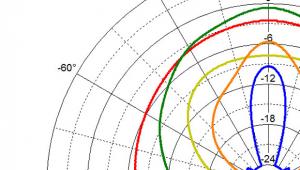A Look at Panasonic's Expanded VIERA Connect

Panasonic had an event yesterday where they showed off some of the new apps available for their VIERA Connect web-streaming platform.
On the surface, it was merely an update of the platform with some new content providers. But what those providers were offering was interesting. Very interesting indeed.
Potentially. . . it's the future.
VIERA Connect, for those not up on the lingo, is Panasonic's streaming "smart TV" platform. Connect the TV to the Internet, and you have access to Netflix, Hulu Plus, Amazon Video on Demand, etc. All the big TV manufactures have some sort of platform like this. Samsung's and LG's are aesthetically better than Pana's, but in both cases they're more cumbersome to navigate. LG offers a web browser, FWIW. Sony - forced as they are into using their XMB interface - provides an odd but not particularly hard to use experience.
So VIERA Connect is a bit homely, but personally all I care about is how easy it is to get to the real content, like the aforementioned streaming services.
What Panasonic showed off were some new additions. The AccuWeather app is far more attractive and useful than any other version of this I've seen, and if you live in a place with weather (I do not) it's probably quite cool (pun very much intended).
The Break app gives you comedy and other videos, organized for easier consumption than they'd be through the anarchy of YouTube.
As cool as those are, they weren't the real interesting offerings. The Wealth TV app gives you access to previous content (VOD), but also streams their live HD feed - the same feed available to people with U-verse, FiOS, Charter, and other cable providers. Their content is a mix of travel, cars, food, and other such things you'd expect from a channel with a name like Wealth TV.
This is far more interesting than it first appears. Not the content itself – but that you can see it. It's practically subversive. Sure, there are plenty of TV apps that offer specialized content (most are terrible). This is the first I've seen that gives you direct access to their "broadcast" feed, live, completely bypassing the traditional MSOs. You'd think something like this would be disruptive, or at the very least cause some sort of blowback. Why, for example, would Cablevision pick up and pay for Wealth TV, when their customers can already get it directly?
There's a monthly fee for access to Wealth TV's channel app. OK, so think of this: how many channels do you watch from the hundreds provided by your cable/satellite company? Personally, other than broadcast channels and HBO/Showtime (which I pay directly for anyway), I'd say I watch 3 channels. How much money would I save paying Comedy Central, Travel, and Discovery directly and skipping all that sports crap?
This goes way beyond the pined-for a la carte cable channel offerings. You don't even need to pay for cable. Pay for the channels you want directly.
I've written a few articles on the feasibility of "cutting the cable cord." If you don't care about watching TV in a timely fashion (weirdo) then it's easy. If you still want to be able to talk to your friends about what happened on Walking Dead last night, there's only a marginal cost advantage (requiring, as it does, paying for each show, along with Netflix and/or Hulu Plus).
But imagine if this direct-content-to-consumer model expands. Would you bother with cable if enough of your favorite shows were available, day and date, albeit via an app running on your TV? Even if access to each of those apps cost you a few dollars a month?
I might.
I'm not talking Netflix or some other grand pay service. I'm talking a Travel Channel app that lets you watch all the No Reservations you want for $3 or something a month. All of a sudden, that "cutting the cord" option becomes much more cost effective. Why pay $100 a month for cable when most of the dozen channels you watch are available directly through your TV. If I paid HBO and Showtime directly the $15 a month I pay AT&T, they'd get more money (no middleman). If I paid Discovery $5 a month, they'd get significantly more money from me each month.
Under-watched channels would lose money (no one would be paying them directly), highly watched channels might make more money.
So that's the question. Would 1,000,000 "subscribers" to Comedy Central at $5 a month work just as well as the $0.05 or whatever they get as a per-viewer fee from the cable/satellite providers (times millions of potential, but not guaranteed, viewers). This is in addition to their standard revenue from commercials.
For channels that people love, this is a boon. For channels no one really cares about, but some viewers might watch occasionally when they're bored (like Spike or CNN), this would be catastrophic.
Maybe that's the concern about a la carte cable programming.
Streaming is the future, though. Can you envision no cable or satellite providers, no broadcast stations at all? Instead, you click the app for the channel you want to watch while Google supplies directed local and national ads based on what they know you like. Who wins, who loses? No local broadcast stations means minimal local news and content. Local news is 99.9% rubbish anyway, so who cares? No local stations, though. Interesting, probably not good, but who would notice? No cable or satellite providers? Oh well. Don't worry about the telcos making money, they'll do fine. Advertisers would do really well: cheaper ad buys, but far more directed content.
The real winners, of course, would be all of us. Instant access to everything we want, when we want it. That's the dream, right?
Something to think about, anyway.
Oh, and Panasonic has an iPad app (with a keyboard!)
- Log in or register to post comments




































































